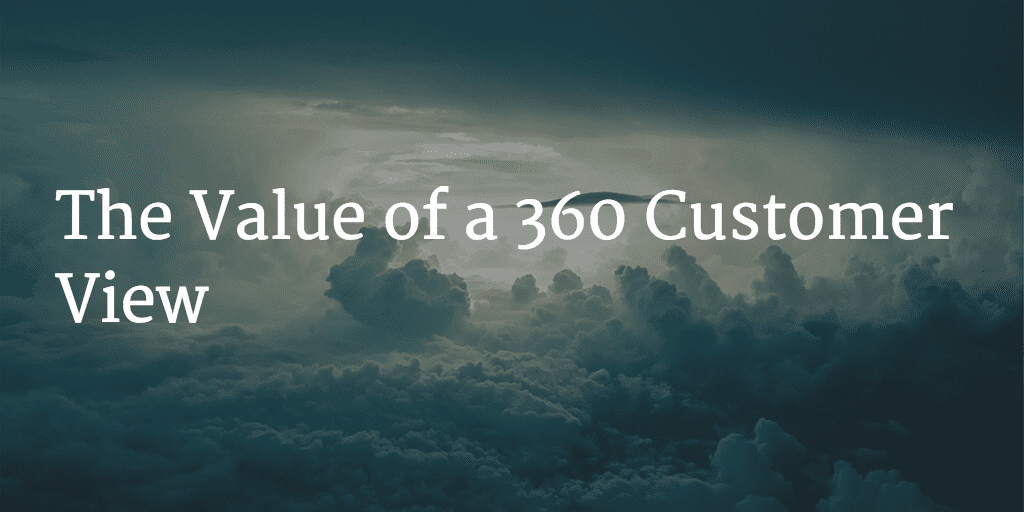I’ve learned over the years that there are two ways to make an impact with a presentation (or a blog). One is to teach your audience something they did not already know. The other is to reinforce truths that they are already aware of but perhaps haven’t articulated quite the way you do. This post falls into the latter category. There’s nothing revelational here, just common sense applied to our Customer Success world.
The question is this – “Is there value in pulling ‘all’ of your customer data together in one place?” The answer is, of course, “yes.” Or, should I say “YES!”? No one would argue with that conclusion. There’s tremendous value in consolidating your customer data into one easily accessible place. The harder questions to answer are “how” and “which data.”
By the way, this is not a new idea. Back in the enterprise software days, we often referred to this “place” as the Customer Data Repository. Many large companies had projects to accomplish this data integration for the same reasons we want to do it today. But it was much harder to do back then. Data was not only in silos, but those silos were less accessible than the systems in which the data tends to reside today. Fewer APIs and no built-in integrations were the norm. So, most Customer Data Repository projects were never fully completed. And, even if the data was successfully moved into one place, the ability to visualize it and make it useful to end users, was much more challenging.
But that elusive goal remains the same and is more achievable than ever – one consistent view of all customers and all (relevant) data. It’s not quite right to say “all customer data.” That’s too broad and can result in doing a project for the sake of doing a project. This effort must be undertaken with a business goal in mind. In the world of Customer Success, I think about the set of data that helps me understand customer health. At the risk of oversimplifying, this wouldn’t include information like a customer’s address. If it’s my job to drive retention, I almost certainly don’t care what the customer’s business address is. But I very much care about information such as:
- how long they’ve been a customer
- how long until their next renewal
- current contract value
- transaction history
- invoice history
- survey history
- product usage history
And there are lots more elements, too. I’m no data integration expert, so I can’t speak in detail about which ETL tool is best, how to create a common key, or what the best underlying database technology is. But I can tell you “why” to do this, and “where” to do it (or where to not do it).
The “why” is pretty obvious. A consistent view of your customers across all customer-facing organizations has huge value, especially in a recurring revenue business model where your success is completely dependent on your customer’s success. Don’t you want your Customer Support reps to know if the customer they are talking to is 90 days behind on their payments? Or wouldn’t you want your Customer Marketing team to be able to quickly pinpoint the very best reference customer to meet the Sales guy’s request? Most importantly, don’t you want your Customer Success team to have all the information they need to start being proactive in their outreach to customers, instead of reactive? The bottom line value is clear – happier customers and improved retention.
How about “where”? This is perhaps the most important question. What seems like the logical answer is your CRM system. You can definitely push all the information there and be way ahead of where you are today. And if this is truly all you can afford to do, please do it. You’ll find it’s not the answer, but it’s a great stepping stone. And it’s already a repository of lots of your customer information anyway.
But beware of thinking that this is your ultimate solution. It’s not. Your CRM system, despite its name, is just not designed to solve many of the business problems you are ultimately going to want to solve. The effort required to integrate all of this data, and the potential value that can be realized by doing so, beg for finding an application that is specifically designed with Customer Success in mind.
It’s not just a place to store your data, but an application for identifying those customers who need your attention, so you can take action, and then providing a workflow for tracking and consistently repeating those actions. In addition, the right application will give you that single view of a customer across all dimensions of customer health. After all, that was the point of this discussion and the subject of our quest. There are applications out there that can help you here. Some are point solutions, some are holistic. Define your business goals clearly and then go explore the possibilities. You may be pleasantly surprised.

